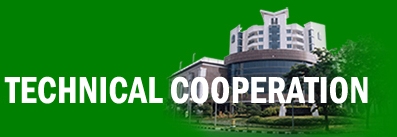|
PREFACE
Information
and communication technology (ICT) has become an indispensable tool in
the fight against world poverty. ICT provides developing nations with an
unprecedented opportunity to meet vital development goals such as
poverty reduction, basic healthcare and education far more effectively
than before. Those nations that succeed in harnessing the potential of
ICT can look forward to greatly expanded economic growth, dramatically
improved human welfare and stronger forms of democratic government.
THE
UNIQUE CHARACTERISTICS OF ICT
ICT
can be a powerful enabler of development goals because its unique
characteristics dramatically improve communication and the exchange of
information to strengthen and create new economic and social networks:
-
ICT
is pervasive and crosscutting.
ICT can be applied to the full range of human activity from personal
use to business and government. It is multifunctional and flexible,
allowing for tailored solutions—based on personalization and
localization—to meet diverse needs.
-
ICT
is a key enabler in the creation of networks and thus allows those with access to benefit
from exponentially increasing returns as usage increases (i.e.
network externalities).
-
ICT
fosters the dissemination of
information and knowledge by separating content from its
physical location. This flow of information is largely impervious to
geographic boundaries—allowing remote communities to become
integrated into global networks and making information, knowledge
and culture accessible, in theory, to anyone.
-
The
"digital" and "virtual" nature of many ICT
products and services allows for zero or declining marginal costs. Replication of content is
virtually free regardless of its volume, and marginal costs for
distribution and communication are near zero. As a result, ICT can
radically reduce transaction
costs.
-
ICT's
power to store, retrieve, sort, filter, distribute and share
information seamlessly can lead to substantial efficiency
gains in production, distribution and markets. ICT streamlines
supply and production chains and makes many business processes and
transactions leaner and more effective.
-
The
increase in efficiency and subsequent reduction of costs brought
about by ICT is leading to the creation of new products, services
and distribution channels within traditional industries, as well as innovative
business models and whole new industries. Intangible assets like
intellectual capital are increasingly becoming the key source of
value. With the required initial investment being just a fraction of
what was required in the more physical-asset intensive industrial
economy, barriers to entry are significantly lowered, and
competition increased.
-
ICT
facilitates disintermediation, as it makes it possible for users to
acquire products and services directly from the original provider,
reducing the need for intermediaries. This cannot only be a
considerable source of efficiency, but has in fact been one of the
factors leading to the creation of so-called "markets of
one," leveraging ICT's potential to cater to the needs or
preferences of users and consumers on an individual basis.
-
ICT
is global. Through the creation and expansion of networks, ICT can
transcend cultural and linguistic barriers by providing individuals
and groups the ability to live and work anywhere, allowing local
communities to become part of the global network economy without
regard to nationality, and challenging current policy, legal and
regulatory structures within and between nations.
These
characteristics suggest that ICT has the potential, if conceived as a
means and not an end in itself, to be a powerful enabler of development.
However, the fact that ICT can, in theory, assist development efforts
does not mean that it will necessarily do so. In order for ICT to
positively foster development goals, it must be employed effectively.
*
from: Creating a Development Dynamic: Final Report of the Digital
Opportunity Initiative, Accenture, Markle Foundation, UNDP, July 2001
The
manuals shall provide guidelines for countries to improve or optimize
its e-readiness. Self-assessment of e-readiness is provided on separate
document as a framework to determine the level of each country. Various
factors were taken into account in this self-assessment. Some of these
factors were later becoming key factors, which need to be considered in
improving e-readiness. Some were prerequisite and played crucial role as
they had to be available even for the initial level.
STRUCTURE
OF DOCUMENT
The
prequisite for each level were discussed first. Later, upgrade path,
stages of development and what to focus during improvement will be
presented. Lastly, each key factor contributing toward development of
ICT shall be identified and analyzed.
|

